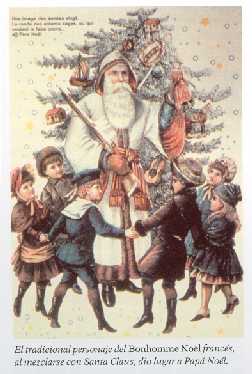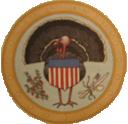The dates
From the IV century, Christians started to celebrate this new festivity (only Easter was celebrated until this date), and, from the V century, because of the progressive division between the Western and Eastern Roman Empires, it was also divided in two: Christmas, celebrated in the Western, and Epiphany in the Eastern.
The date of birth of Jesus is not known exactly. An old oriental myth tells that Mythreas, god that protects the cosmic order and human justice, and guaranteed peace treaties, came out from a rock a 25th of December, with the aim of liberate men from the Evil. Some shepherds attended his birth. Later on, under the influence of Babylon, the same god appears as an envoy of the Sun with the mission of creating life on Earth.
Christian tradition added the date of 25th December in order to move people far from pagan traditions of Natalis Solis Invicti in a period of decadent paganism, in which the Sun worship was very used. The Church placed the birth of Jesus in the moment of solar re-birth, in the winter solstice.
In 1582, the Gregorian calendar corrected the Julian one in some days, a change Orthodoxs refused to accept. That is why they celebrate their Epiphany the 7th January. Later on, maybe due to habits or to try to attract the Orthodox Church, the Catholic Church adopted the 6th January as the Epiphany, a festivity additional to Christmas (even if their significance is, theoretically, exactly the same).
Tree vs Nativity scene
The rivality between the Christmas tree and the nativity scene started in the XVI century, as a result of the fight between protestants and anti-reformists. The Chu
 rch had been reoresenting the birth of the Messiah and the adoration of the Wise Men for centuries, while the first known Christmas tree is located in Alsatia, XV century, although the
rch had been reoresenting the birth of the Messiah and the adoration of the Wise Men for centuries, while the first known Christmas tree is located in Alsatia, XV century, although the y have very ancient pagan and druidic antecedents.
y have very ancient pagan and druidic antecedents.The Lutheran reform, in the XVI century, was against the scenes, trying to avoid any form of idolatry, and imposed the tree in Protestant countries. The tree, without the fact of idolatring figures, still had a religious symbology. The Caholic reaction was to modernise them; scenes progressively showed a more realistic representation of people and facts. They were soon full of non-religious figures, shepherds, that represented every kind of job and work.
Santa Claus
 The current figure of Santa Claus is inspired in a Christian priest of Greek origin called Nicholas, who lived during the IV century in Anatolia and, while coming from a rich family, shared his belongings with the poors.
The current figure of Santa Claus is inspired in a Christian priest of Greek origin called Nicholas, who lived during the IV century in Anatolia and, while coming from a rich family, shared his belongings with the poors.The transformation of Saint Nicholas in Santa Claus happened around 1624. Dutch immigrants in America took their habits and traditions with them, among them Sinterklaas, their saint patron. In 1809 the writer Washington Irving wrote a satire in which he changed the name of this Dutch saint according to the English prononciation: Santa Claus.

In the middle of the XIX century, the American figure of Santa Claus was exported to England, and later to France, where it was unified with Bonhomme Noel, a bearded character who dressed in white with bright decorations. From this union comes the current figure of Santa Claus, whose definitive appearance was designed in 1931 by Coca-Cola.
The habit of giving gifts to children in Christmas appears in the Ancient Era. Rome dedicated a festivity in December to Saturn (Chronos for the Greeks), in the end of which gifts were received by children. European children received them in later times, coming from very different characters, both religious (Wise Men in Spain) or pagans (the witch Befana in Italy).
Later on, Saint Nicholas replaced most of these characters. Since 1822, the Santa Claus visit is represented on Christmas Eve. Its adoption was very successful in the US because it satisfied a needs of the American society, as gifts were equally given to protestant, jewish, orthodox or lay children. Currently it is a pagan symbol accepted all around the world.











